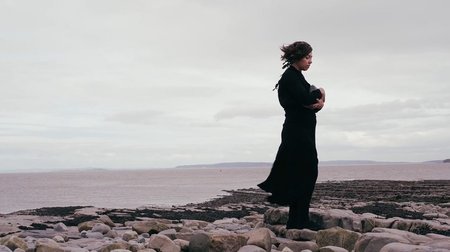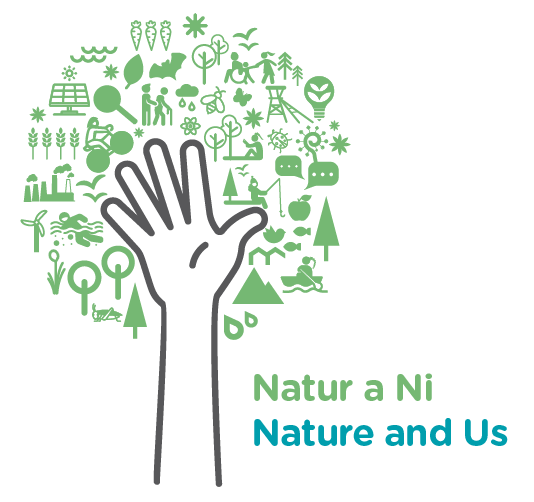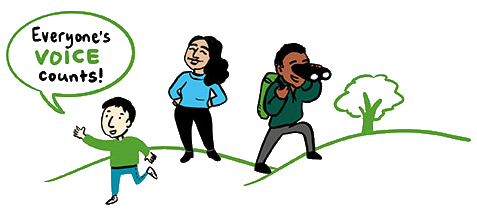Georgina Biggs

Gina Biggs is the Artistic Director of SheWolf, a disabled–led performance company bringing landscape alive through performance. For this residency Gina explored Flat Holm Island. Gina’s project asked, how can lived disabled experience help model a progressive society, and what does it have in common with unstable environmental contexts? And, how can these common threads help locate power and change how power works?
What she learnt
Gina reflects:
Flat Holm is in many ways a microcosm of modern society, but there any action you take has a more immediate and visible impact. This makes it a great site to explore the subtle effects of power on the body – be that on the body of the earth or my own. Some of the parallels that I found during the residency between my lived disabled experience (of managing chronic pain and mental health) and unstable social/environmental contexts are:
- The concept of time - Time on the island is governed by the tides and light levels, there are times you can land and times you can’t. Life there is seasonal – the gulls come and go, the landscape changes from yellow with wild turnips in the spring to the crisp browns of dried grass as summer ends. But the rest of life is only just across the water – at one point we heard a concert on the mainland and a lone dog bark. There is light pollution from Hinkley Point and Cardiff Bay, and commercial flights are increasing again. Clock time is returning after COVID and we are stepping back onto the treadmill, a treadmill which doesn’t account for the often punctuated, extended and interrupted timelines that disabled life is lived on. It’s hard to hold onto the urgent need to change behaviours that will lessen the impacts of climate change. Just as it is hard to hold onto the needs of disabled people the ableist paradigm kicks into to productive mode. We are, once again, living in the busy now. Finally, much like the invisible nature of pain, how do we get people to understand the urgent need for environmental change when the damage is done incrementally, almost in geological time. We need to find ways of articulating this incremental change in tangible ways.
- Hypervigilance - Managing a body in pain induces a state of hypervigilance, monitoring every change and being aware of every potential threat which might disturb the body’s fragile balance. The island requires the same state of awareness, every input has a consequence and everything which lands on the island must be monitored in order for it to be managed in conservation terms. Covid and the forced isolation of lockdown reinforced this.
- Resilience and defence - Though it has only been invaded twice the island is filled with generations of war time defences, the walls are up and the island remains on high alert. How do you build resilience to pain that never goes away? What defences are erected, knowingly or not, which help you to cope with the treat of invasion/destabilisation?
- Trade offs/compensations - Both living with disability and living on the island require trade-offs and compensations. On the island you have the privilege of privacy and isolation, but energy use is limited - you can’t just order a takeaway if fatigue hits you like a sledgehammer! At the time of the residency tourists were arriving back on the island and there was a sense of both eagerness to welcome their return as well as the fear of social interaction (one warden explained she was afraid she had lost the art of conversation). The same is true of managing my condition. Isolation often helps me to rest/recover, but its flip side is poor mental health. I need connection, yet fear its demands at the same time.
- Helplessness and futility – With invisible disability you can have good days and bad days, knowing that can make the bad days even tougher, the unpredictability of it all making you feel helpless at times. Often, I have asked, what’s the point of putting myself out there when I can’t guarantee any stability? From the island, watching the many container ships pass by daily, it is easy to feel that any small amount of personal change is not going to make a difference when you consider that each container ship spends £84,000 per day in diesel (at £390 per tonne of fuel and using 217 tonnes per day). Helplessness in the face of an industrialised and progressive society is something we share, how can we as a tiny islands make any difference in the face of such mountains to climb? And yet, we are both attending to matters of ‘growth’ is just growth of a different kind.
Staying local – Managing chronic pain saw my world reduce. I began more home-bound, the day to day being organised around the comfort of a bed to which I could retire unseen when needed. Living in local became conducive to supporting my needs. The island functions on the premise of investing in ‘guardians’ who look after the local patch. It’s a model of municipality. How does my action, in my tiny corner/ein milltir Sgwâr, compare to bigger societal changes? Environmentally, we need to be reinforcing this idea of living local – work, food, and play.
What we can learn from this
Gina’s enquiry offers another perspective on the precarious nature of our coastline. It presents the case for viewing coastal realignment though the lens of disability and to reconsider the often detached or reductive way that we communicate changes to our shoreline. The idea of reframing the way we talk about the impacts of climate change feels important, “find ways of
articulating this incremental change in tangible ways” and connecting real lived experience to loss of homes and community. Making space for acknowledging what will be lost in the vision for the future is as important as what will be gained.

